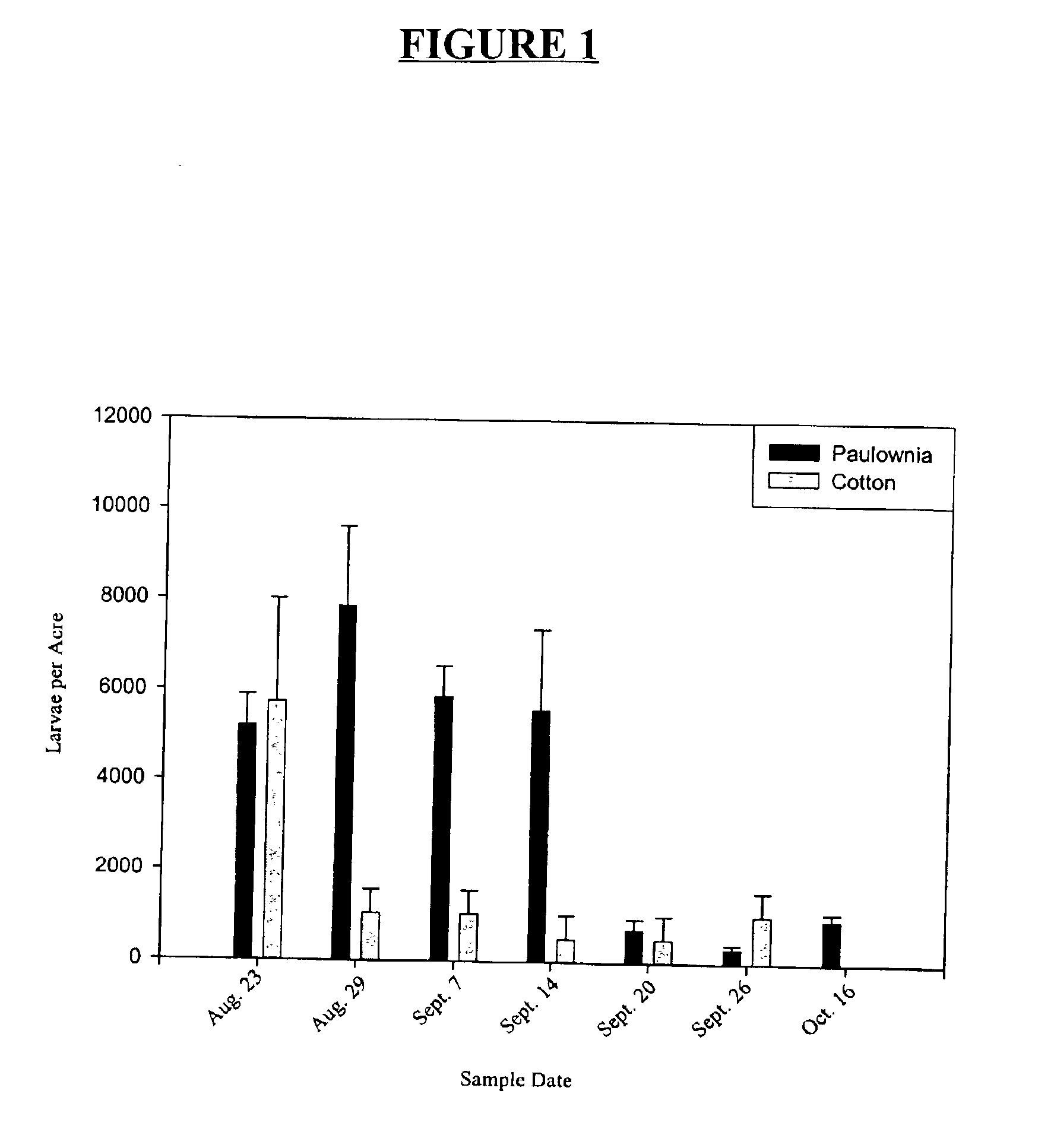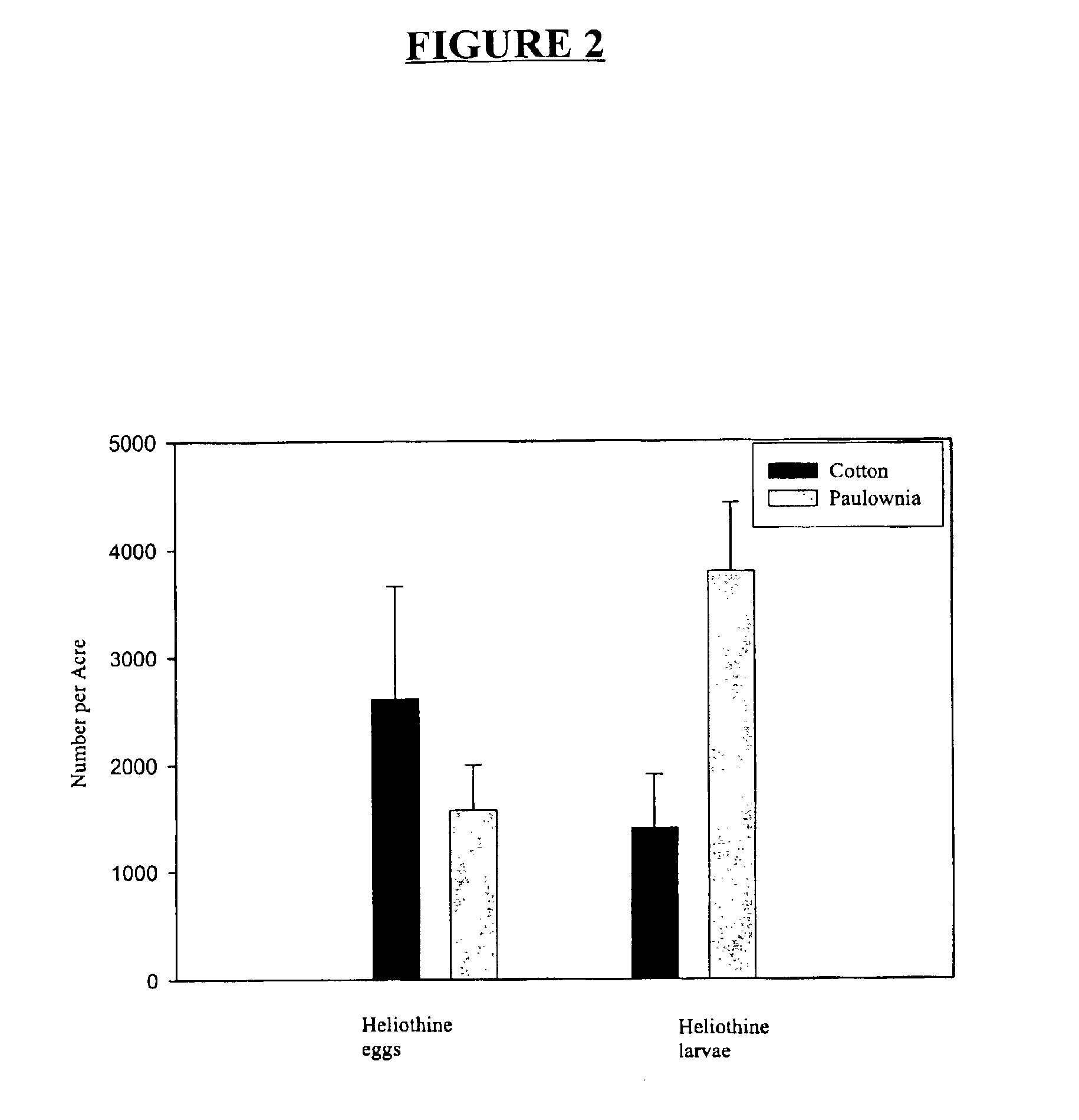Insect resistance management in agricultural applications
a technology for insect resistance management and agricultural applications, applied in soil-working methods, agriculture tools and machines, agriculture, etc., can solve the problems of insufficient production of larvae per acre, delay in the development of pest resistance, and inability to treat refuges with insecticides containing activity on lepidopteran larva
- Summary
- Abstract
- Description
- Claims
- Application Information
AI Technical Summary
Benefits of technology
Problems solved by technology
Method used
Image
Examples
examples
Initial studies were conducted on the Brown Loam Experiment Station of Mississippi State University in Learned, Miss. The treatments were Paulownia elongota and nectaried cotton. Each plot was planted on 38 inch row centers, 16 rows×50 linear feet. Cotton was planted at normal agronomic rates (approximately 3 plants per row feet). The seedlings trees were planted approximately 3 feet apart within rows. The data that was obtained from a sampling of the plot on a single day during the test period is shown in Table 1. The results for the same sampling in Table 2 are in per acre terms.
TABLE 1PaulowniaCottonPlants sampled10075Total Helio eggs00Total Helio larvae1221Small Helio larvae181Medium Helio larvae620Large Helio larvae420Loopers1424Armyworms184Other Lepidopterans30
TABLE 2PaulowniaCottonTotal Helio eggs00Total Helio larvae5594521Small Helio larvae825521Medium Helio larvae28420Large Helio larvae19250Loopers65112085Armyworms8252085Other Lepidopterans1370
Extensive studies were conduct...
PUM
 Login to View More
Login to View More Abstract
Description
Claims
Application Information
 Login to View More
Login to View More - R&D
- Intellectual Property
- Life Sciences
- Materials
- Tech Scout
- Unparalleled Data Quality
- Higher Quality Content
- 60% Fewer Hallucinations
Browse by: Latest US Patents, China's latest patents, Technical Efficacy Thesaurus, Application Domain, Technology Topic, Popular Technical Reports.
© 2025 PatSnap. All rights reserved.Legal|Privacy policy|Modern Slavery Act Transparency Statement|Sitemap|About US| Contact US: help@patsnap.com



